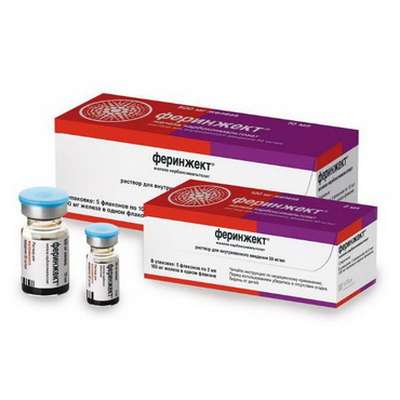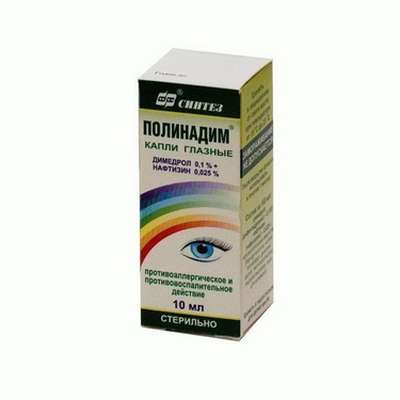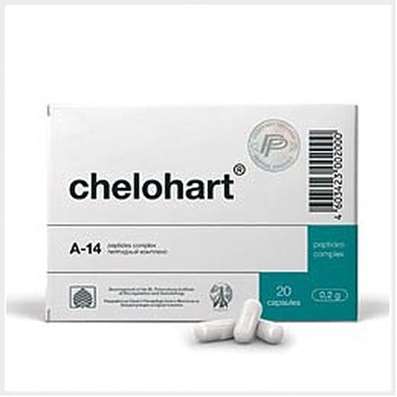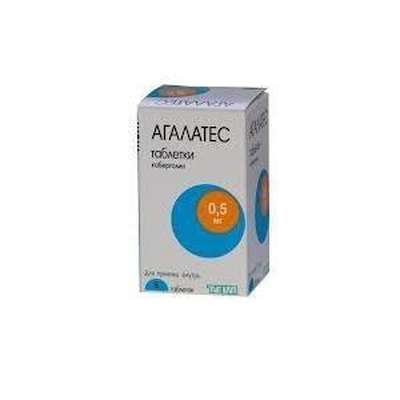Instruction for use: Fluocinolone acetonide (Fluocinoloni acetonidum)
I want this, give me price
Pharmacological group
Glucocorticosteroids
Nosological classification (ICD-10)
L20 Atopic dermatitis
Itchy atopic eczema, Common neurodermatitis, Allergic skin diseases, Allergic skin diseases of non-infectious etiology, Allergic skin diseases of non-microbial etiology, Allergic skin diseases, Allergic skin lesions, Allergic manifestations on the skin, Allergic dermatitis, Allergic diathesis, Allergic itching dermatosis, Allergic Skin Disease, Allergic skin irritation, Dermatitis allergic, Atopic dermatitis, Dermatosis allergic, Diathesis exudative, Skin Allergic Disease, Skin allergic reaction to medicinal and chemical preparations, Skin reaction to medication, Skin and allergic disease, Acute eczema, Chronic atopic dermatitis, Exudative diathesis, Itching allergic dermatosis
L21 Seborrheic dermatitis
Dermatitis seborrheic, Increased sebum separation, Seborrheic Eczema, Seborrheic dermatitis of the scalp, Seborrheic pyodermatitis, Seborrhea, Eczema seborrheic
L28 Simple chronic lichen and prurigo
Scab, Prurigo, Bacterial prurigo, Limited prurigo with a strong lichenization, Nodular pruritis
L29 Itching
Itching with partial obstruction of the biliary tract, Dermatitis itchy, Dermatosis with persistent itching, Other itching dermatoses, Itching dermatoses, Itching allergic dermatosis, Itching dermatitis, Itching itch, Excruciating itching, Severe itching, Endogenous itching, Skin itching with dermatosis, Limited itching dermatitis, Itching of the skin, Itchy scalp, Itching eczema
L30.9 Dermatitis, unspecified
Allergic dermatoses complicated by a secondary bacterial infection, Anal eczema, Bacterial maturation, Varicose Eczema, Venous dermatitis, Inflammation of the skin, Inflammation of the skin upon contact with plants, Inflammatory Skin Diseases, Inflammatory skin reactions, Inflammatory processes of the skin, Hypostatic dermatitis, Fungal Eczema, Fungal dermatosis, Dermatitis, Dermatitis is stagnant, Dermatitis and eczema in the anal area, Dermatitis acute contact, Perianal dermatitis, Dermatosis, Dermatosis of the scalp, Dermatosis of psoriasis, Dermatosis with persistent itching, Dermatoses, Dermatoses itchy, Other itching dermatoses, Significant eczematous manifestations, Itching with, dermatoses, Itching eczema, True eczema, Skin reaction to insect bites,Skin itching with dermatosis, Constitutional eczema, Weeping eczema, Drowsing inflammatory skin disease, Dying Infectious-Inflammatory Skin Disease, Non-allergic dermatitis, Nummular eczema, Acute contact eczema, Acute inflammatory skin disease, Acute dermatosis, Acute severe dermatosis, Perianal dermatitis, Superficial dermatosis, Subacute Contact Eczema, Simple dermatitis, Occupational dermatitis, Psychogenic dermatosis, Bubble dermatitis of newborns, Pustular eruptions, Irritation and redness of the skin, Low-flammable eczema, Dry atrophic eczema, Dry eczema, Toxic dermatitis, Ear eczema like dermatitis, Chronic eczema, Chronic dermatosis, Chronic common dermatosis, Scaly papular dermatosis, Eczema, Eczema anal region, Eczema of the hands, Eczema Contact, Eczema lichenized, Eczema Nummular, Eczema acute, Eczema acute contact, Eczema subacute, Eczematous dermatitis, Eczema-like rashes, Ecome exogenous, Endogenous eczema, Gluteal dermatitis, Restricted itchy dermatitis
L40 Psoriasis
Chronic psoriasis with diffuse plaques, Generalized psoriasis, Psoriasis of the scalp, Psoriasis of the scalp, Generalized form of psoriasis, Psoriasis dermatitis, Psoriasis complicated by erythroderma, Invalidative psoriasis, Isolated psoriatic plaque, Exfoliative psoriasis, Psoriatic Erythroderma, Psoriasis with eczematosis, Hyperkeratosis in psoriasis,Inverse psoriasis,Psoriasis eczematous, Dermatosis of psoriasis, Psoriasis of the genitals, Psoriasis with lesions of hairy areas of skin, Erythrodermal psoriasis, Chronic psoriasis of the scalp, Chronic psoriasis, Ordinary psoriasis, Refractory psoriasis, Kebner phenomenon, Scaly lichen
L43 Red Leaf Flat
Lishay Wilson, Erosive-ulcerative form of red flat lichen, Warty forms of red lichen, Red lichen, Flat lichen, Kebner phenomenon
L51 Erythema multiforme
Stevens-Johnson syndrome, Malignant exudative erythema, Multiforme exudative erythema, Erythema multiforme, Multiforme exudative erythema, Stevens-Johnson Syndrome, Exudative multiform erythema, Erythema is polymorphic
L55 Sunburn
Solar burns
L93.0 Discoid lupus erythematosus
Chronic discoid lupus erythematosus, Red discoid lupus, Discoid lupus, Discoid erythematosis
T30 Thermal and chemical burns, unspecified
Pain syndrome with burns, Pain in burns, Pain with burns, Sluggishly healing post-burn wounds, Deep burns with a wet scab, Deep burns with abundant compartments, Deep burn, Laser burn, Burn, Burning of the rectum and perineum, Burn with mild exudation, Burn disease, Burn injury, Superficial burn, Superficial burn of I and II degree, Superficial skin burns, After-burn trophic ulcer and wound, Post-burn complication, Loss of fluid during burns, Sepsis burn, Thermal burns, Thermal skin lesions, Thermal burn, Trophic after-burn ulcers, Chemical burn, Surgical burn
W57 Bite or sting with non-toxic insect and other non-venous arthropods
Allergic reaction to insect bites, Skin reaction after insect bite, Reactions to insect bites, Mosquito bite, Bite of bloodsucking insects, A bite of an insect, The bite of the wasp
Code CAS67-73-2
Characteristics
Glucocorticoid for topical application.
White or white with a creamy hue, crystalline powder odorless, practically insoluble in water, slightly soluble in chloroform, soluble in ethanol, acetone and methanol. Molecular weight 452,50.
Pharmacology
Pharmacological action - anti-inflammatory, antiallergic, antipruritic, glucocorticoid.
It binds to specific receptors located in the cytoplasm of cells of target organs and activates the synthesis of mRNA; Induces the formation of lipocortin proteins, one of which is lipomodulin, inhibits the activity of phospholipase A2. Affects all types of metabolism. Accelerates protein catabolism. Reduces the utilization of glucose by insulin-dependent tissues, causes hyperglycemia, increases the amount of glycogen, increases the breakdown of fats, delays sodium and water ions, promotes the excretion of potassium, reduces the absorption of calcium ions, causes hypocalcemia, induces the secretion of parathyroid hormone that mobilizes calcium from bone tissue. Reduces the number of lymphocytes and eosinophils, causes erythrocytosis (stimulates the production of erythropoietins). The anti-inflammatory effect is due to the inhibition of the activity of phospholipase A2 and the stabilization of cell membranes and organelles, incl. Lysosomes; Inhibits the formation of arachidonic acid and its metabolic products (PG (prostaglandins), Tx, leukotrienes), inhibits hyaluronidase; Oppresses the division of mast cells, prevents their degranulation, reducing the liberation of mediators of inflammation (histamine, serotonin, bradykinin), suppresses the synthesis of the platelet activating factor. Reduces the proliferation of connective tissue. Immunosuppressive and antiallergic effects are the result of a decrease in the migration of B- and T-lymphocytes and their interaction. Increases the anti-shock effect, AD (increases the level of catecholamines in the blood), restores the sensitivity of adrenoreceptors to noradrenaline and adrenaline, narrows the vessels, activates liver enzymes involved in the metabolism of xenobiotics (antitoxic action).
Easily penetrates the skin through the stratum corneum. Not exposed to biotransformation in the skin and cumulates in the stratum corneum (found in the skin even after 15 days from the time of its topical application). When external application of fluocinolone acetonide is absorbed to a minor degree in the systemic bloodstream, it undergoes biotransformation in the liver with the formation of inactive metabolites. Excreted mainly by the kidneys. Absorption of fluocinolone acetonide is more pronounced when applied to the skin of the face and affected areas of the skin, as well as when using occlusive dressings. In addition, absorption increases with frequent application and application to large areas of the skin. Absorption of the drug in children is more pronounced than in adults.
Application of Fluocinolone acetonide
Acute and severe uninfected inflammatory skin lesions, incl. Eczema of various genesis and localization, atopic dermatitis, psoriasis (including scalp), lichen planus, seborrheic dermatitis (including scalp), itchy skin of various genesis, discoid lupus erythematosus, allergic skin diseases , Erythema multiforme, prurigo, 1st degree burns, sunburn, insect bites.
Contraindications
Hypersensitivity; Bacterial, viral and fungal skin diseases, pyoderma, anogenital itching, skin tuberculosis, cutaneous manifestations of syphilis, wound skin lesions, precancerous and tumor skin diseases, diaper rash, extensive psoriatic eruptions (plaques), pink and acne vulgaris (if used in common Or pink acne may exacerbate the course of the disease); Trophic ulcers of the lower leg, associated with varicose veins, children under 2 years.
pregnancy and lactation
Controlled teratogenicity tests with topical application of fluocinolone acetonide were not carried out during pregnancy. Do not use in the first trimester of pregnancy; Use in the II and III trimester of pregnancy is possible only if the perceived benefit to the mother exceeds the potential risk to the fetus.
Action category for fetus by FDA - C.
It is not known to what extent fluocinolone acetonide penetrates into breast milk when applied externally, therefore, during lactation, it is prescribed with extreme caution, only in exceptional cases, for a short time and in limited areas of the skin. Use the drug on the skin of the mammary glands is not allowed.
Side effects
Local reactions: burning, skin itching, acne, post-steroid vascular purpura, suppression of epidermal growth, skin atrophy and telangiectasia, dry skin, perioral dermatitis, striae, folliculitis, increased hair loss or alopecia, melanoderma or skin discoloration, secondary infected skin lesions.
With long-term use and / or application to large body surfaces, systemic reactions characteristic of glucocorticoids, including Steroidal gastric ulcer, adrenal insufficiency, Itenko-Cushing syndrome, slowing of reparative processes, steroid diabetes, peripheral edema, hypertension, secondary immunodeficiency (exacerbation of chronic infectious diseases, generalization of the infection process, development of opportunistic infections), allergic reactions (urticaria, maculopapular rash ).
Interaction
Compatible with antimicrobial drugs (drug). Reduces the activity of hypotensive, diuretic, hypoglycemic, anabolic, antiarrhythmic drugs, potassium preparations. Diuretics (except potassium-sparing) increase the risk of hypokalemia. During treatment, vaccination and immunization should not be carried out due to the immunosuppressive effect of the drug.
Overdose
Symptoms: skin irritation at the site of application (itching, burning), hyperglycemia, glucosuria, Itenko-Cushing syndrome.
Treatment: symptomatic on the background of a gradual withdrawal of the drug.
Routes of administration
Outwardly.
Precautions
Use only short courses on small areas of the skin. Children older than 2 years are appointed with caution, once a day, in small areas of the skin. Duration of appointment in children should not exceed 5 days. With caution apply to girls during puberty. With extreme caution apply to the skin of the eyelids or in the eye area in patients with glaucoma or cataract (possibly increased symptoms of the disease). When applied to the skin of the face, the absorption of the drug increases and even after short-term use, the occurrence of side effects (telangiectasia, skin atrophy, perioral dermatitis) increases, so use the drug in this area with extreme caution. With caution appoint patients with atrophic skin changes, especially the elderly. It is recommended to wear loose clothes during treatment.

 Cart
Cart





